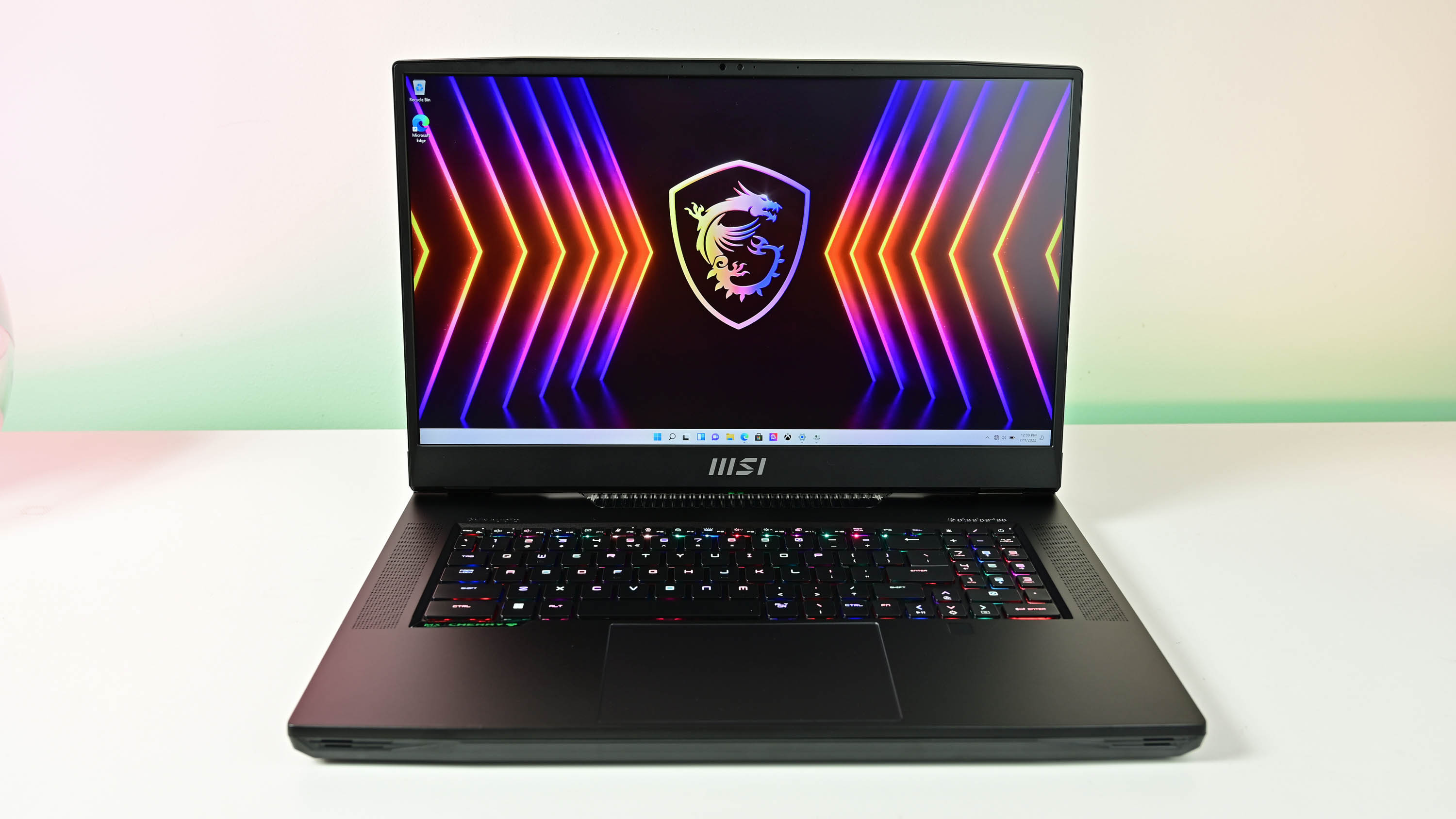Windows Central Verdict
MSI's Titan GT77 is a monster 17.3-inch laptop packed with hardware that provides desktop-class performance for enthusiast gamers and creators. Sure, you could build a PC for a lot less money, but if you need power on the go, the Titan GT77 should be considered.
Pros
- +
Outstanding performance without throttling
- +
Actually decent battery life
- +
Lovely low-profile mechanical keyboard with Cherry MX switches
- +
Loud, full audio from quad speakers
- +
IR camera and fingerprint reader
Cons
- -
Display comes washed out, requires work to get it looking right
- -
Plastic bottom panel feels cheap, fingerprint magnet
- -
Slow UHS-I SD card reader
- -
Webcam is only 720p
- -
Gets very hot
Why you can trust Windows Central
The MSI Titan GT77 is one of the few laptops that (so far) hosts the new 12th Gen Intel Core HX-Series processors (CPU), designed to deliver desktop performance in a mobile platform. These CPUs are some of Intel's most powerful to date, and understandably the PC built around them has to have a support system that can keep up with the power demands and thermal output. The monster Titan GT77 is one of those laptops.
I already wrote a standalone Intel Core i9-12900HX review to get a better idea of how the CPU performs compared to other high-end options, and it's now time to take a closer look at the Titan GT77 itself. It's big, it's expensive, and it's absolutely brimming with extra features. Is it your next powerhouse laptop?
MSI Titan GT77: Price, availability, and specs
Intel supplied Windows Central with a review unit of the MSI Titan GT77. It has inside an Intel Core i9-12900HX CPU, an NVIDIA RTX 3080 Ti Laptop graphics card (GPU), 64GB (4x16GB) of DDR5-4800MHz RAM, three 1TB Samsung PM9A1 PCIe 4.0 NVMe solid-state drives (SSD), and a 17.3-inch display with FHD resolution.
The Titan GT77 is available to buy directly from MSI, and it's also listed at a bunch of major third-party retailers including Amazon, Adorama, Best Buy, B&H, and Newegg. The exact configuration I'm testing is not a common setup and I wasn't able to find it for sale. Models available to the public have an upgraded UHD display and less storage.
More specifically, a Titan GT77 with Core i9-12900HX CPU, NVIDIA RTX 3080 Ti Laptop GPU, 64GB of RAM, 2TB of SSD storage, and 120Hz UHD display is listed at about $4,800 at MSI and Amazon.
If you don't need quite that much power, the most affordable model currently sits at about $3,100 at MSI, Amazon, and B&H. It has an Intel Core i7-12800HX CPU, NVIDIA RTX 3070 Ti Laptop GPU, 32GB of DDR5 RAM, a 1TB M.2 PCIe 4.0 SSD, and a UHD display.
Here's a look at the exact specifications found in my review unit.
| Header Cell - Column 0 | MSI Titan GT77 |
|---|---|
| OS | Windows 11 Home |
| Processor | 12th Gen Intel Core i9-12900HX |
| RAM | 64GB (4x16GB) DDR5-4800 |
| Row 3 - Cell 0 | Dual-channel |
| Graphics | NVIDIA RTX 3080Ti Laptop GPU |
| Storage | 3TB (3x1TB) M.2 PCIe 4.0 NVMe SSD |
| Row 6 - Cell 0 | Samsung PM9A1 |
| Display | 17.3 inches |
| Row 8 - Cell 0 | 1920x1080 (FHD), IPS, 360Hz |
| Ports | Two Thunderbolt 4, three USB-A 3.2 (Gen 2), RJ45 Ethernet, HDMI, Mini DisplayPort, SD card reader, 3.5mm audio |
| Keyboard | SteelSeries Cherry MX mechanical |
| Row 11 - Cell 0 | Per-key RGB |
| Audio | Quad 4W speakers |
| Wireless | Killer Wi-Fi 6E, Bluetooth 5.2 |
| Camera | Front-facing 720p, IR |
| Security | Fingerprint reader, IR camera |
| Battery | 99Wh, 330W AC adapter |
| Dimensions | 15.6 x 12.99 x 0.9 inches |
| Row 18 - Cell 0 | (397mm x 330mm x 23mm) |
| Weight | 7.3 pounds (3.3kg) |
| Color | Core Black |
MSI Titan GT77: Design and features
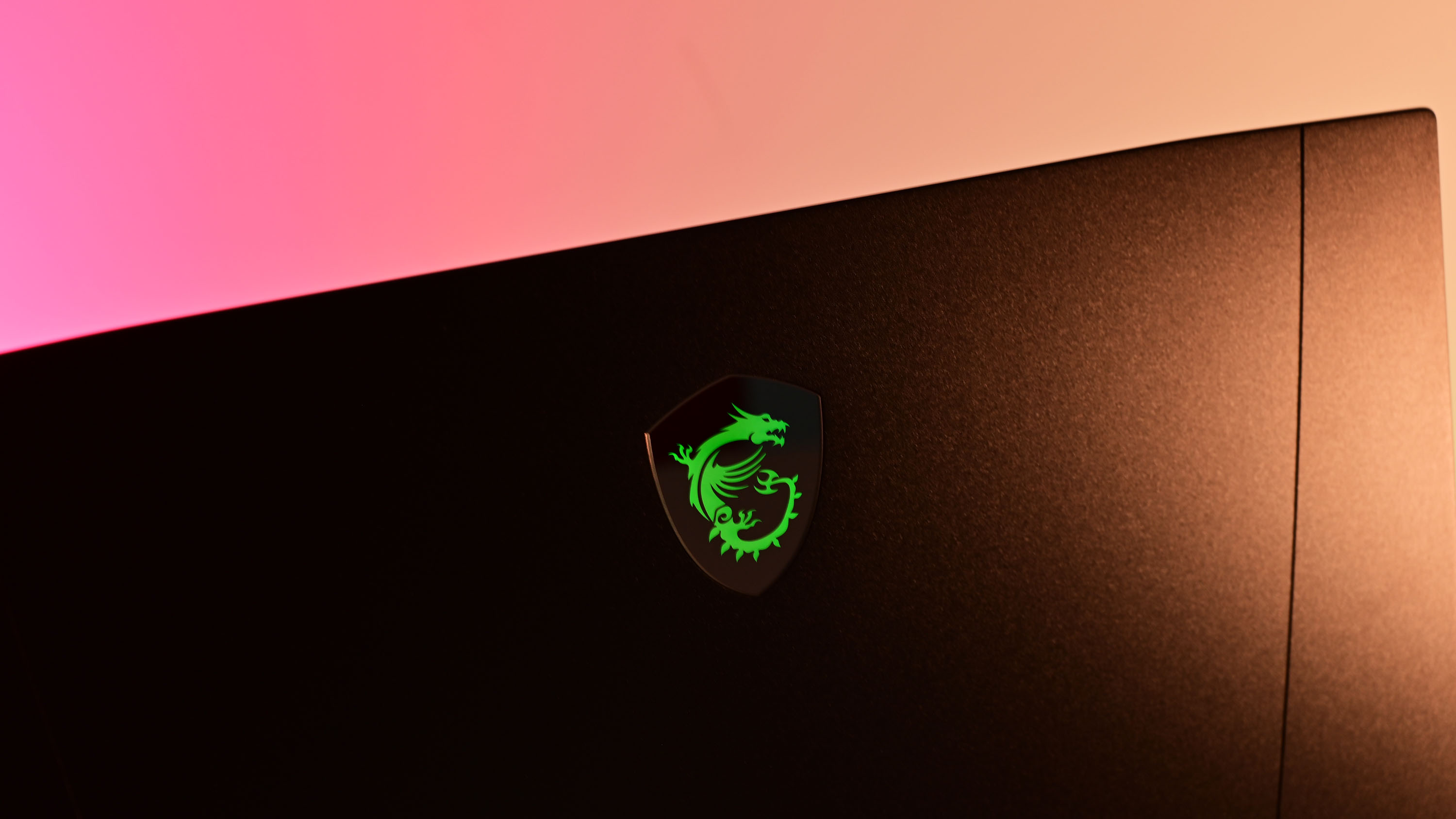
The Titan GT77 weighs in at just more than 7 pounds (3.3kg), but it measures only 0.9 inches (23mm) thin. That's not bad in the world of powerhouse gaming laptops, but the laptop makes up for it with an extended portion behind the display hinges that houses the extra hardware and cooling system. The laptop is about 13 inches (330mm) deep, whereas something like the XPS 17 Ultrabook measures less than 10 inches deep. Yes, it's a big laptop, but it's still far more mobile than an actual desktop.
The chassis is primarily made up of PC/ABS plastic with a Black Core color scheme. This helps keep the weight down. The bottom panel is notably thin and cheap feeling, but the rest of the laptop is fairly rigid. Fingerprints are an issue, so be sure to pack along a cleaning cloth. The lid sports an RGB MSI logo, some curved lines, and not much else.

Exhaust vents live along the entire rear edge of the laptop, and there's some built-in and customizable RGB lighting to go along with them. There are also exhaust vents on both sides of the laptop, though there's no RGB. The bottom of the laptop has some enormous intake vents, and there's a secondary intake on the top of the chassis just behind the lid.
Due to the exhaust vents taking up so much space along the back edge, all ports are installed on the sides of the laptop. This makes for much messier cable management, but at least there is generous port selection. The right side has two Thunderbolt 4 ports, Mini DisplayPort, HDMI, RJ45 Ethernet, and USB-A 3.2 (Gen 2). The left side includes a proprietary charging port, two more USB-A 3.2 (Gen 2), an SD card reader (UHS-I), and a 3.5mm audio jack. As for wireless connectivity, Killer Wi-Fi 6E and Bluetooth 5.2 are on board.
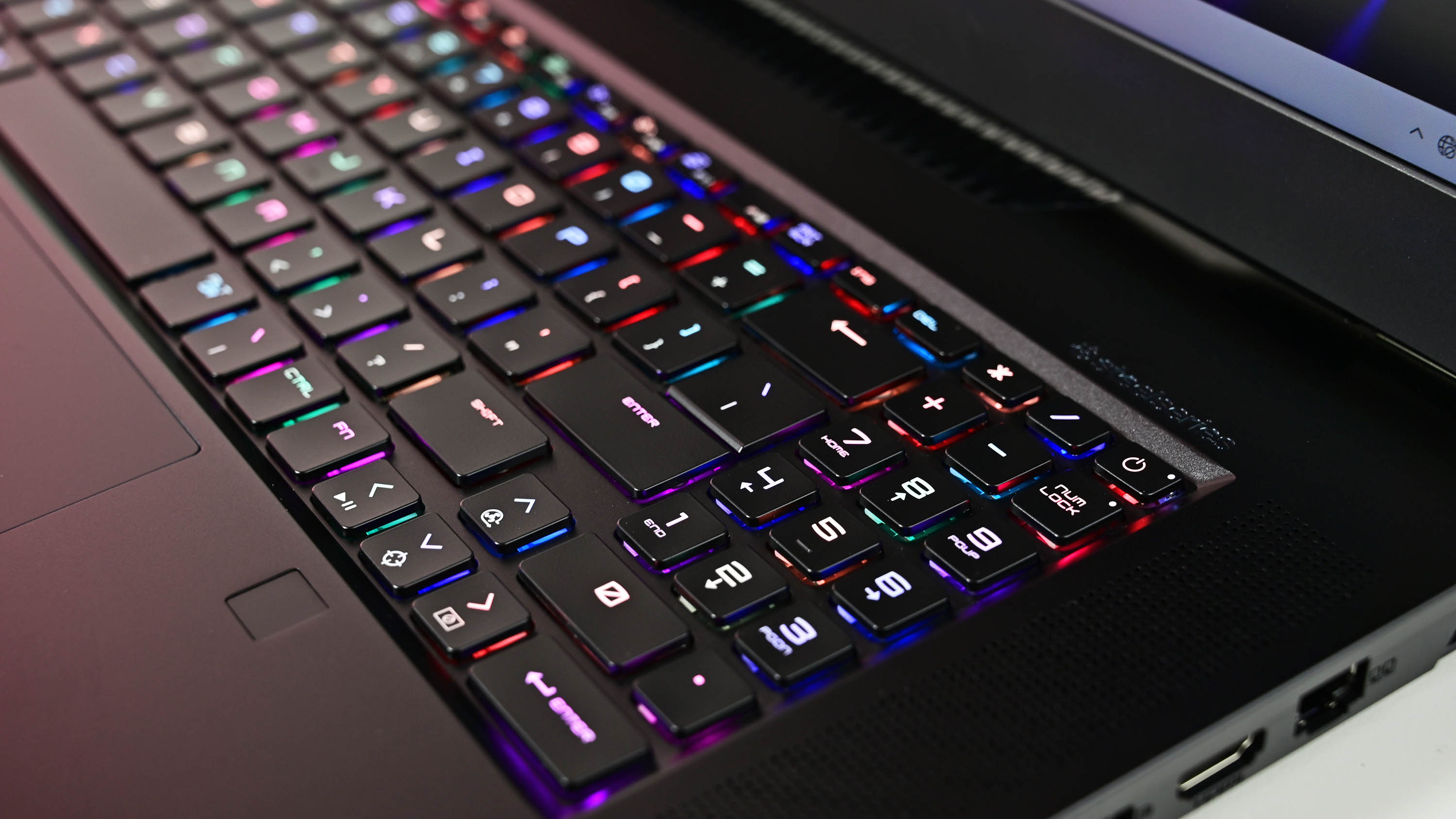
The Titan GT77 comes with four 2W speakers. Two are set up to flank the keyboard on either side, while the other two are installed in the corners on the bottom of the laptop. Nahimic software is onboard, allowing you to tune sound to your liking with presets and individual sliders. Audio quality is impressive; I could feel the bass in my hand when using the WASD keys, and it volume climbs quite loud without distorting. You'll still be able to enjoy your game's audio whether or not you have a headset handy.
A front-facing webcam lives above the display. It has a 720p resolution, an IR sensor for Windows Hello, and a shutter that can be enabled with a keyboard shortcut or through the MSI Center software. I'd like to see at least a 1080p resolution on a laptop this grand, but the IR camera — something not usually seen on a gaming PC — is a welcome addition. Further biometric security is available through a fingerprint reader built into the right-hand palmrest.
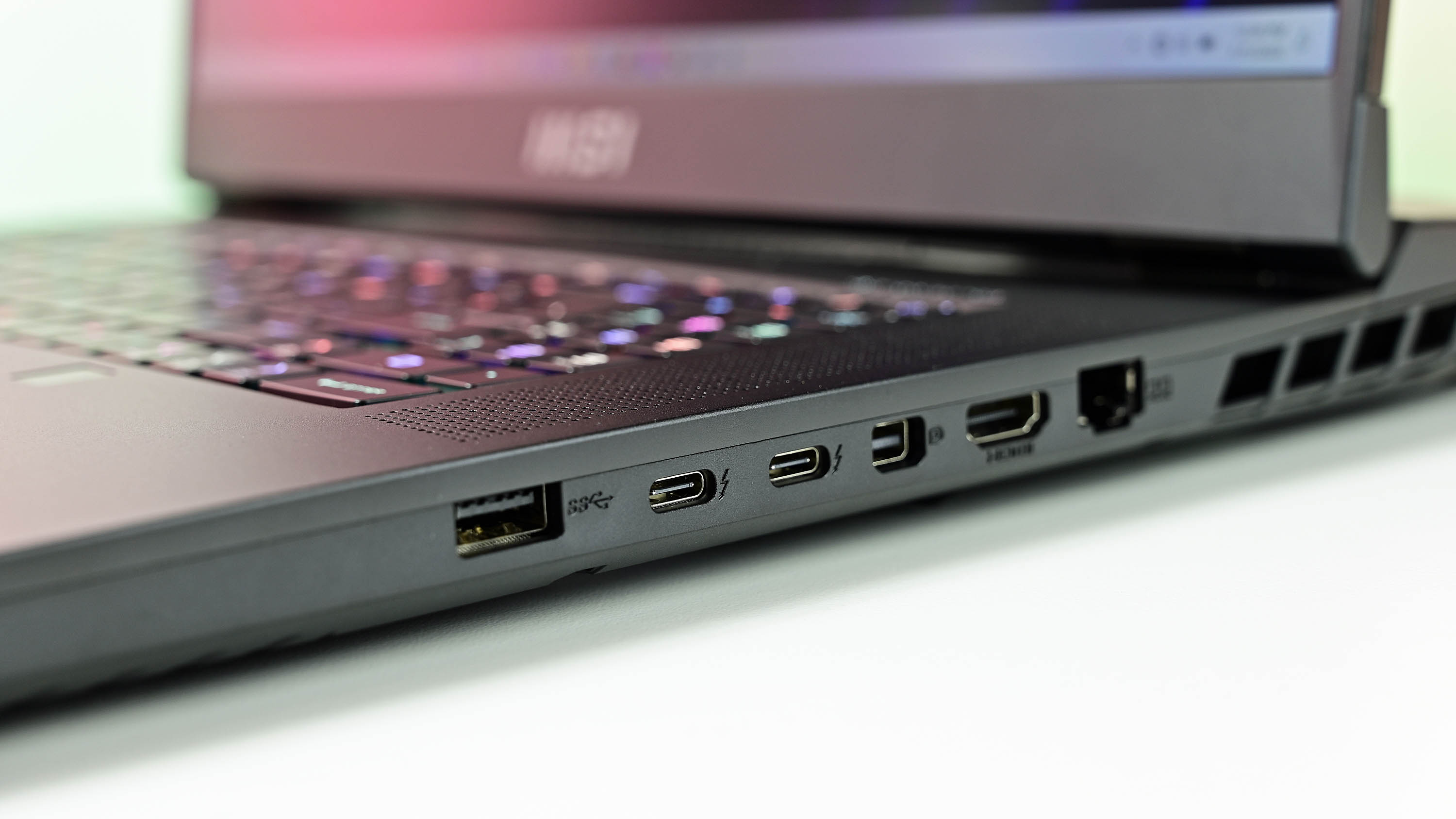
MSI uses a SteelSeries low-profile mechanical keyboard with Cherry MX switches and per-key RGB lighting for the Titan GT77. I love this keyboard. Keys have deep travel, a satisfying click when they actuate, and they're balanced well to avoid misclicks. It's a big step up from the usual gaming laptop keyboard I test out, and anyone who prefers the mechanical feel will love it for gaming and for general typing.
SteelSeries GG software is onboard to handle all RGB lighting. There are a bunch of preset profiles to choose from, and you can also customize everything down to individual keys and zones on the body.
MSI Titan GT77: Display
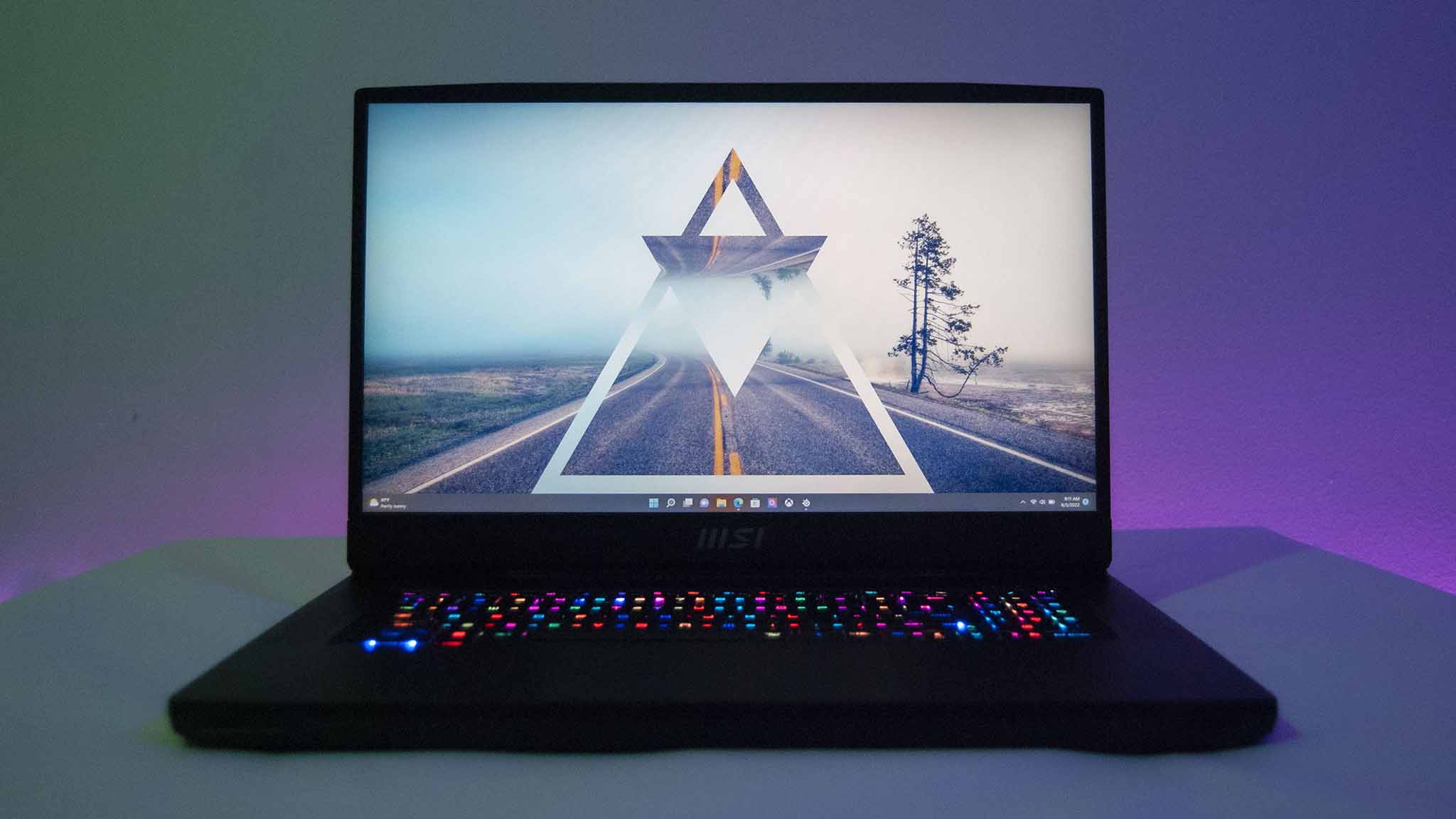
The FHD display in my review unit doesn't seem to be readily available, at least in the U.S. and Canadian regions. That's not a huge deal, as I'd recommend most people go with 4K UHD at 120Hz to accommodate this level of performance hardware. Nevertheless, it's worth testing the FHD screen for color and brightness.
Out of the box, the FHD display is very washed out. Colors are dim to the point that it feels like I'm using an old VA panel, which isn't something you want from a laptop this expensive. Looking around online, it seems that MSI's built-in color management suite "TrueColor" interferes with Intel and NVIDIA drivers. I reinstalled all drivers as recommended in an official MSI troubleshooting document, and the display finally showed me its true potential. Why is this issue passed on to the user? I don't know.
The display does look great when it's set up properly, and the 360Hz refresh rate that goes along with the FHD resolution helps keep up with the huge performance potential. I ran some tests with my SpyderX Pro colorimeter, getting back 100% sRGB, 80% AdobeRGB, and 82% DCI-P3 color reproduction. The screen also hit 342 nits at max brightness, dropping down to 16 nits for working or gaming after hours.
MSI's TrueColor app, when it's working properly, offers five different display profiles (Gamer, Anti-Blue, sRGB, Office, and Movie) with customizable settings within each.
MSI Titan GT77: Gaming
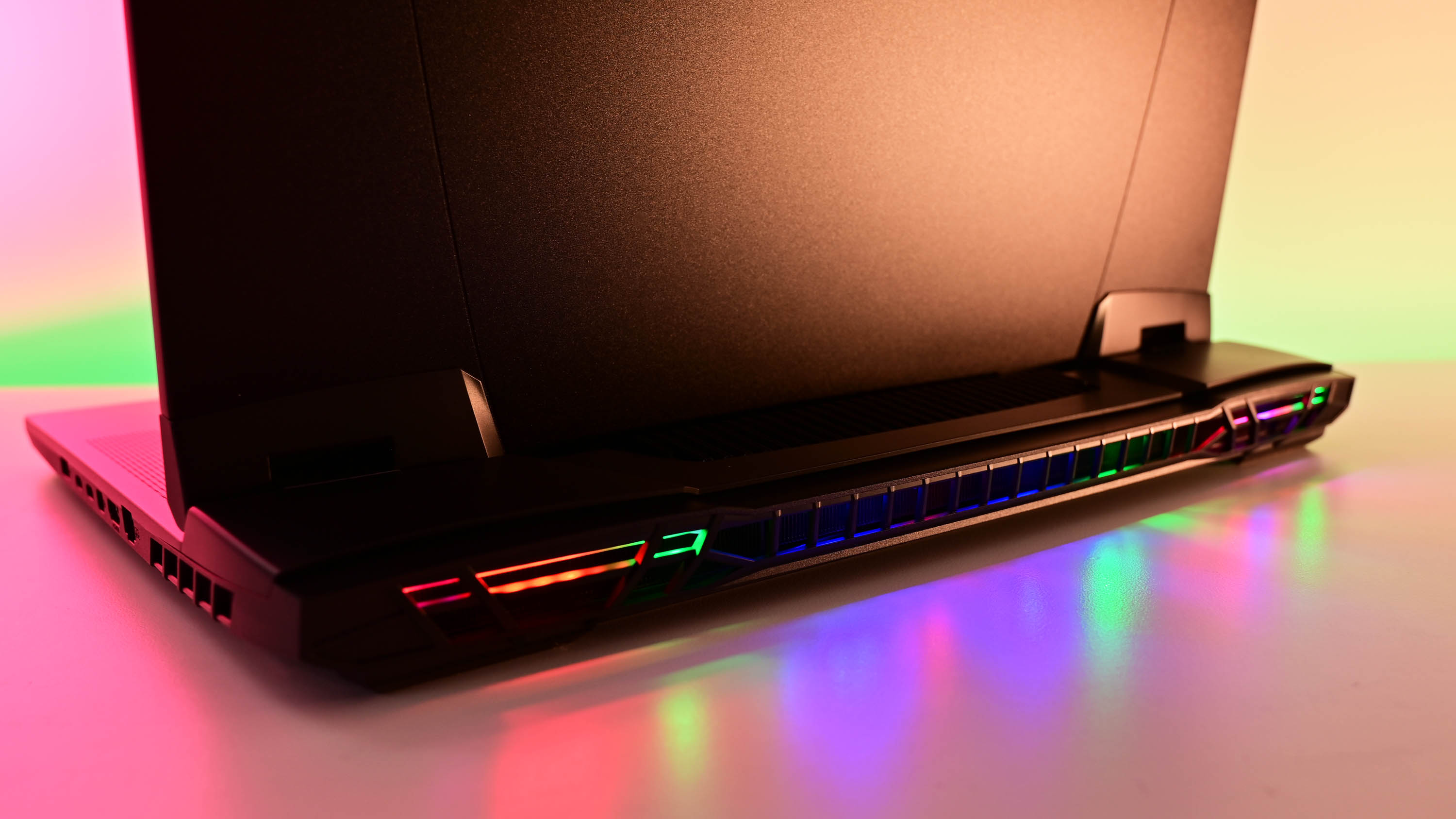
The Titan GT77 comes with MSI Center software installed, giving you better control over the laptop's performance. It has a Hardware Monitoring page that displays usage, fan speed, and temperatures, as well as a Features page that allows you to set up performance modes for specific games and toggle specific settings like Windows key use, GPU hybrid switching mode, webcam shutter, and more.
The main attraction here is the User Scenario section that lets you choose between Intelligent or Manual performance control. You can let MSI's AI take over completely, balancing heat and power for optimal performance. If you go the manual route, you can choose between Extreme Performance, Balanced, Silent, and Super Battery settings.
Intel recommends I use MSI's Balanced profile for benchmarking, so that's mainly what I stuck with when using benchmarking software and testing in-game performance. I noted below any areas — like testing heat, power draw, and battery life — where I used a different power profile.
The Titan GT77 has the right power balancing and cooling to run unthrottled, even with all system parts under full load.
I began with a full-system stress test that ran for 20 minutes to see whether or not the system throttles on the Extreme Performance power profile. Surprisingly, the Core i9-12900HX received the cooling it needed to run without any throttling. It sat at about 71 degrees Celsius (159.8 F) at the end of the test, pulling about 75W of power. The GPU hit the same temperature, pulling about 155W. The fans hit a 59-decibel peak from a foot and a half away, about the distance to your head when you're using the PC. That's about the same volume as a regular conversation.
Surface temperatures on the keyboard hit about 41.6 degrees Celsius (106.8 F) above the CPU, while on the bottom the hotspot climbed to about 46 degrees Celsius (114.8 F). You're not going to want to keep the PC on your lap if you're truly pushing the system, but I had no issues using it for general productivity and gaming.
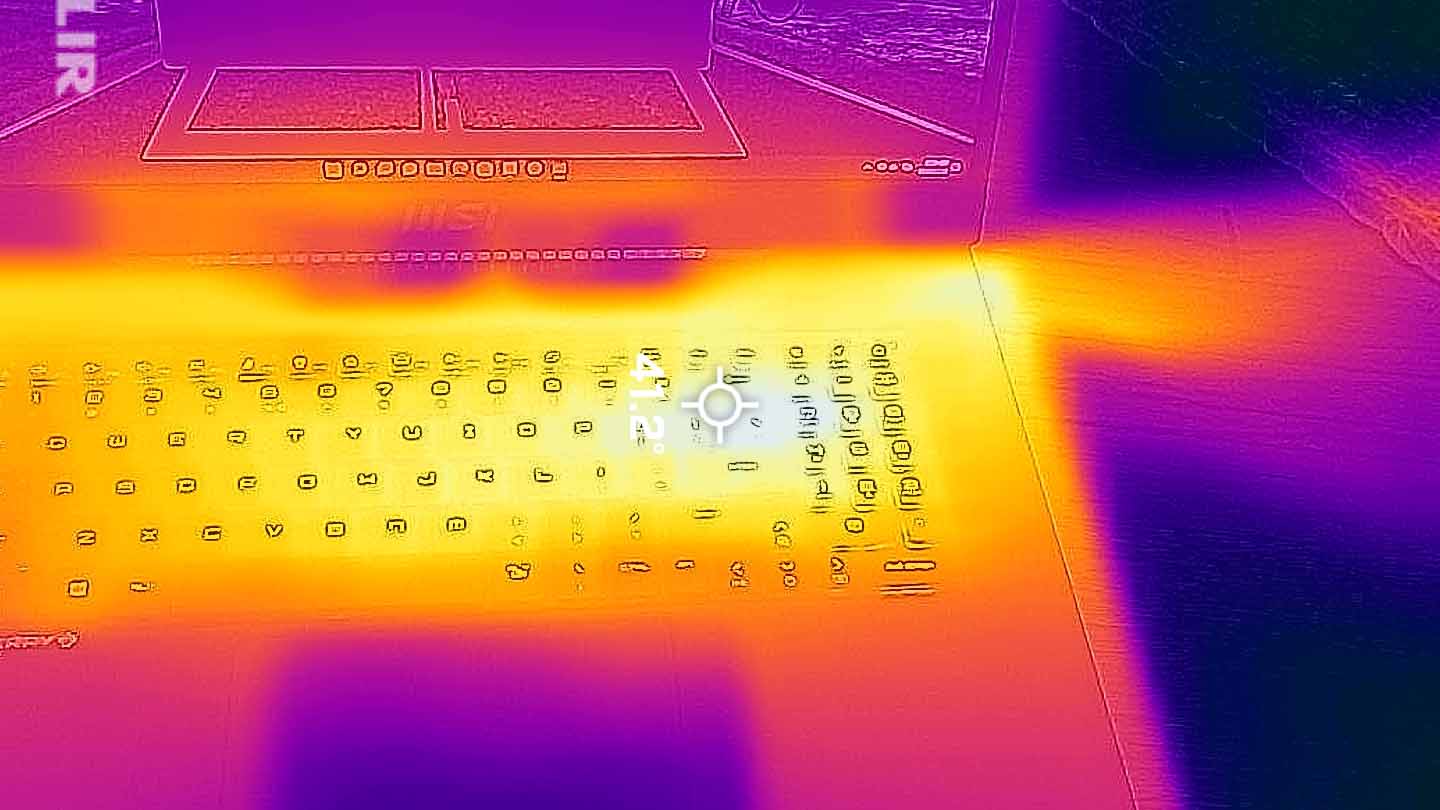
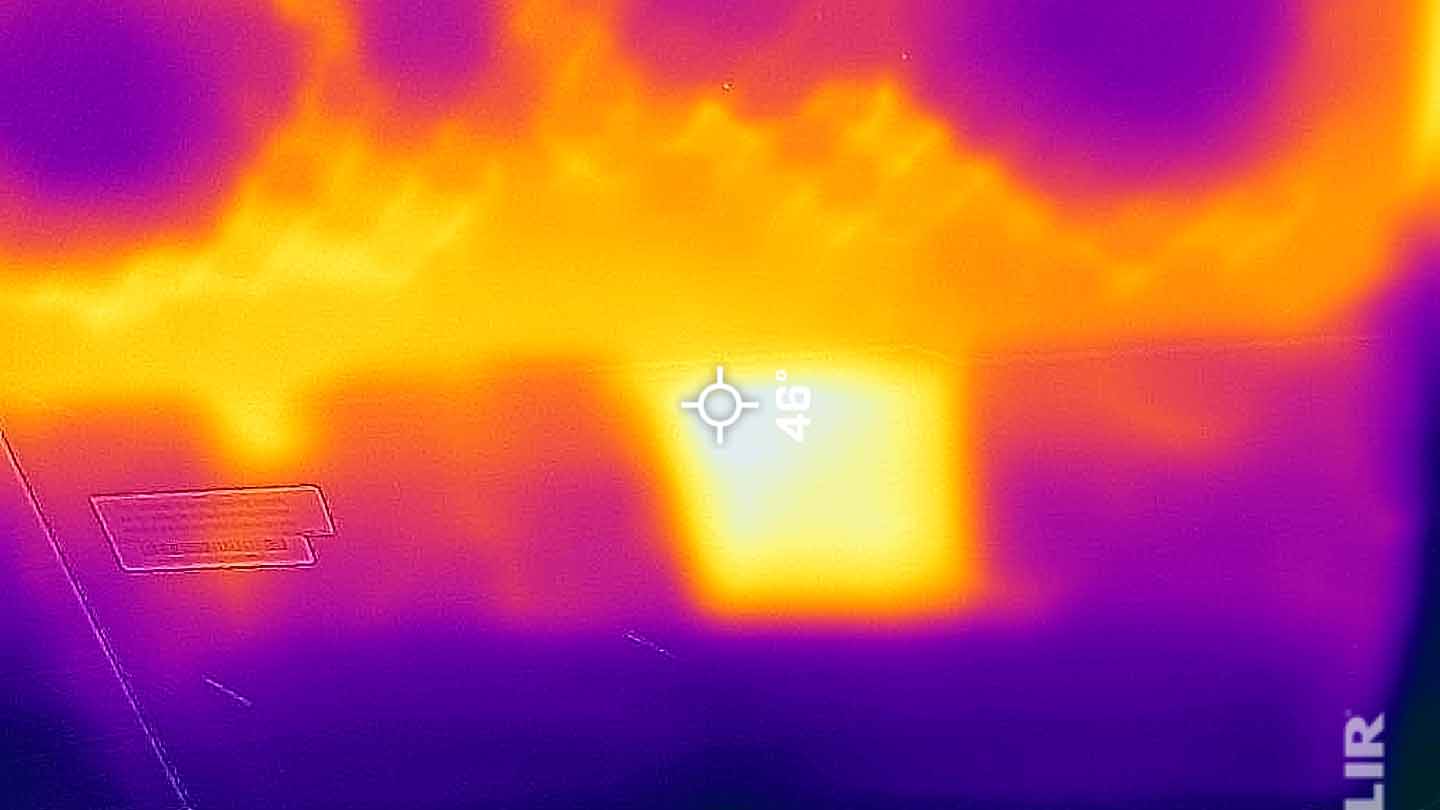
I ran a second stress test with the Balanced power profile to see how it compares. There was again no thermal throttling to be seen, with the CPU sitting at about 74 degrees Celsius (165.2 F) and pulling about 74W of power. The GPU hit about 75 degrees Celsius (167 F) and pulled about 148W of power. Fan noise was quieter, topping out at about 53 decibels. Surface temperatures were really no different than when I tested with the Extreme Performance mode.
I tested one last time, giving MSI's AI Engine control over the system. I didn't notice any major differences in temperature, power draw, or fan noise compared to the other power profiles.
Turning to more focused tests, I ran some 3DMark benchmarks to see how the Titan GT77 compares to other laptops we've recently tested.
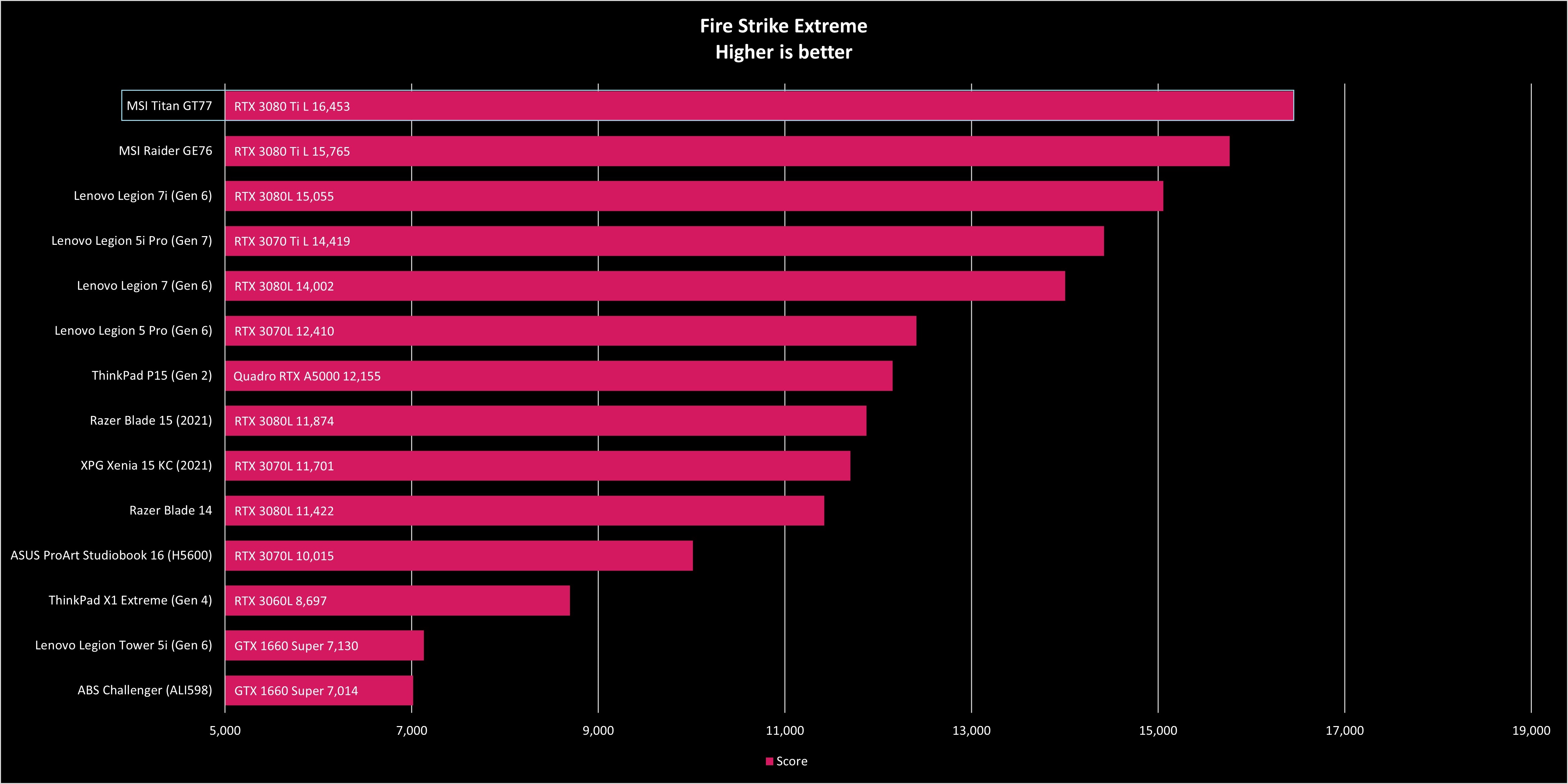
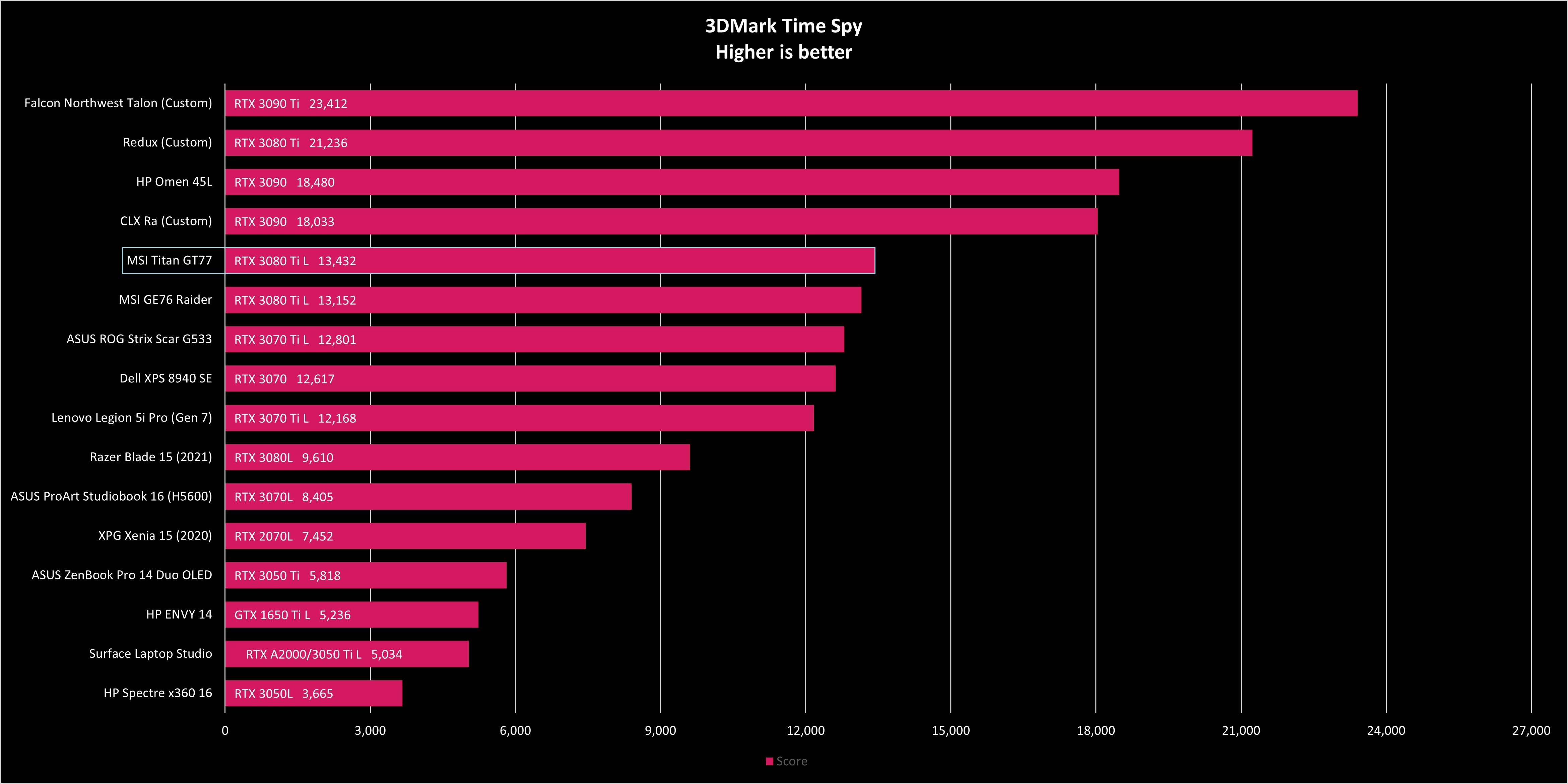
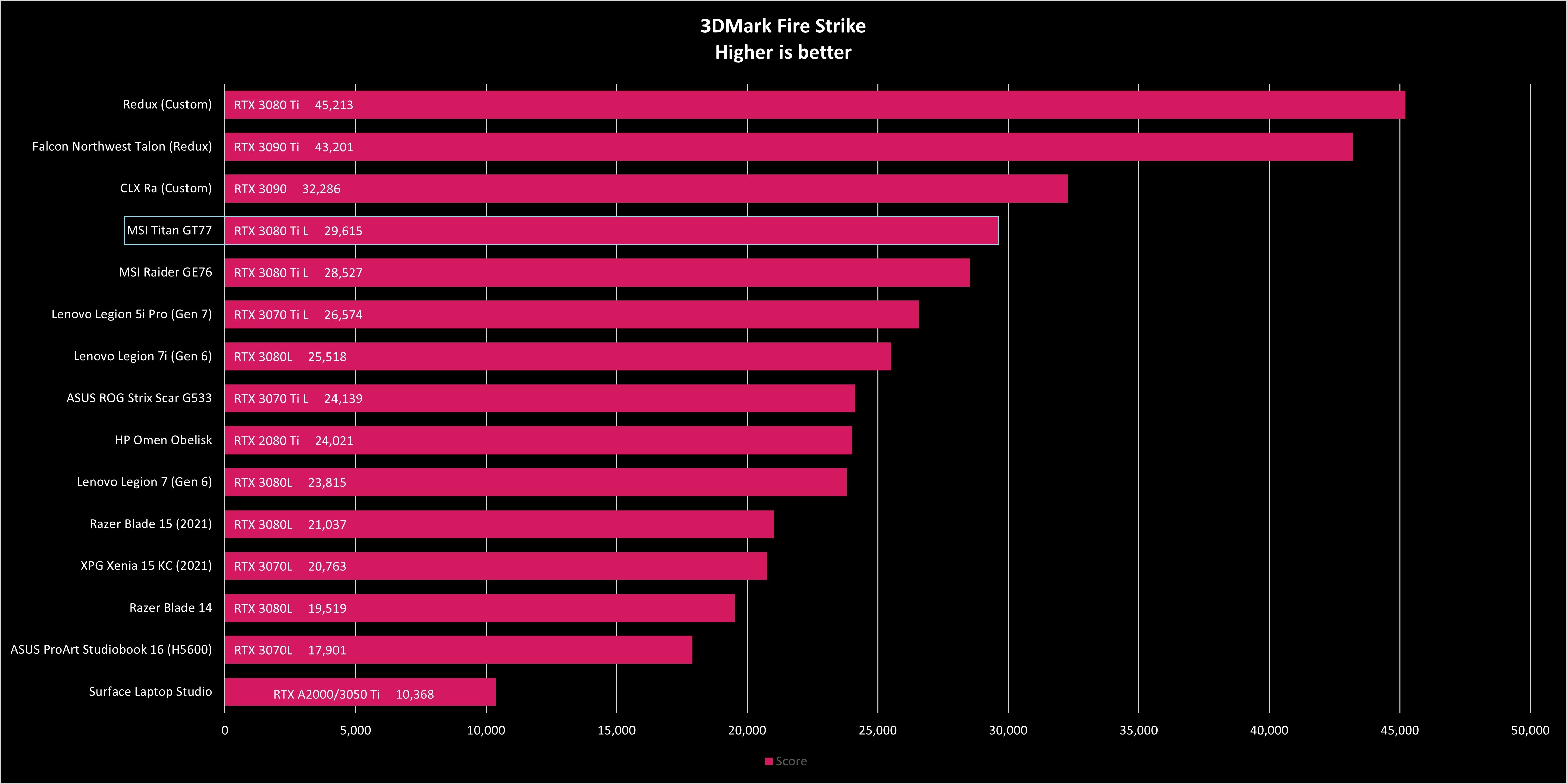
To round out the gaming tests, I ran a bunch of actual games on the Titan GT77. I used the native FHD resolution with DLSS and RTX off unless specified, and I otherwise used the highest in-game preset.
- Assassin's Creed Valhalla: 90 FPS
- Far Cry 5: 157 FPS
- Metro Exodus: 62.4 FPS (RT Normal, DLSS Off) — 77.8 FPS (RT Normal, DLSS Balanced)
- Red Dead Redemption 2: 97.8 FPS (DLSS Off) — 110.8 FPS (DLSS Balanced)
- Shadow of the Tomb Raider (DX12): 179 FPS (RT Medium, DLSS Balanced)
Buying a Titan GT77 with UHD display and playing games at the native resolution will see these numbers drop, but you can always lower the in-game resolution for better results. However, the Core i9-12900HX and RTX 3080 Ti should be able to deliver a quality gaming experience even at a 4K resolution.
MSI Titan GT77: Performance and battery
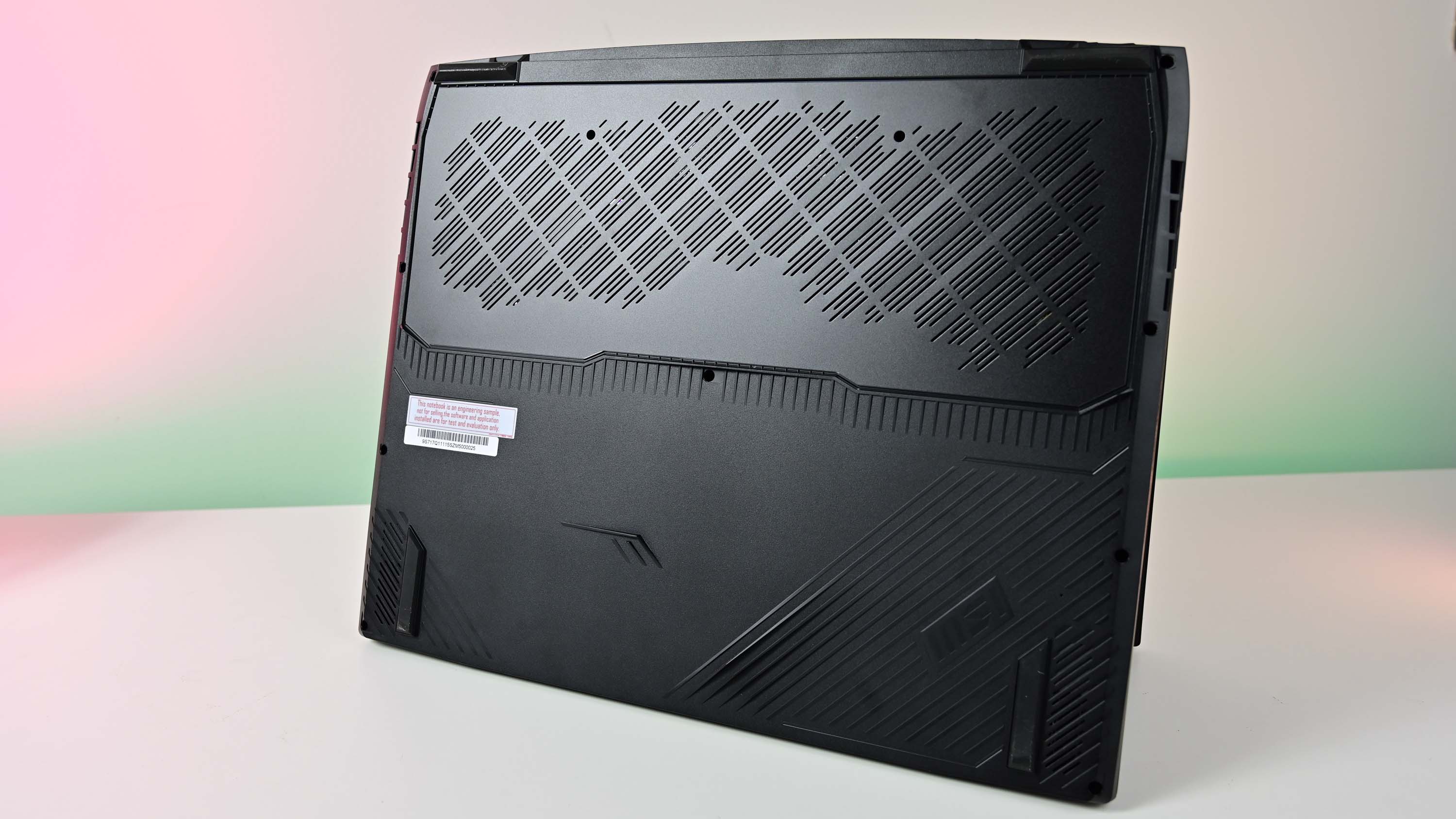
The Titan GT77 packs in a ton of performance hardware, and understandably the cooling system is not small. There are two large fans on the outside, as well as two smaller fans inside; the seven heat pipes are split up between CPU and GPU. Yes, the laptop gets hot, but there's not really any way around it when you have this level of CPU and GPU inside.
There are four M.2 PCIe slots available for storage upgrades after purchase. Three use the PCIe 4.0 standard, while the fourth is PCIe 5.0 with compatibility with PCIe 4.0. The latest PCIe standard isn't a huge deal right now as the best SSDs are just recently moving to PCIe 4.0, but it will set you up nicely for the future. If you buy this laptop, chances are you won't be looking for an upgrade anytime soon. Four SODIMM slots with DDR5 compatibility are also on board for dual-channel memory upgrades.
I ran a bunch of CPU-specific benchmarks in my Intel Core i9-12900HX review, which you can check out for a deeper look at the chip's performance. For the broader laptop review, I ran some extra benchmarks to test full system performance and battery life. I also took some of the CPU review results and compared them to laptops we've recently tested and reviewed.
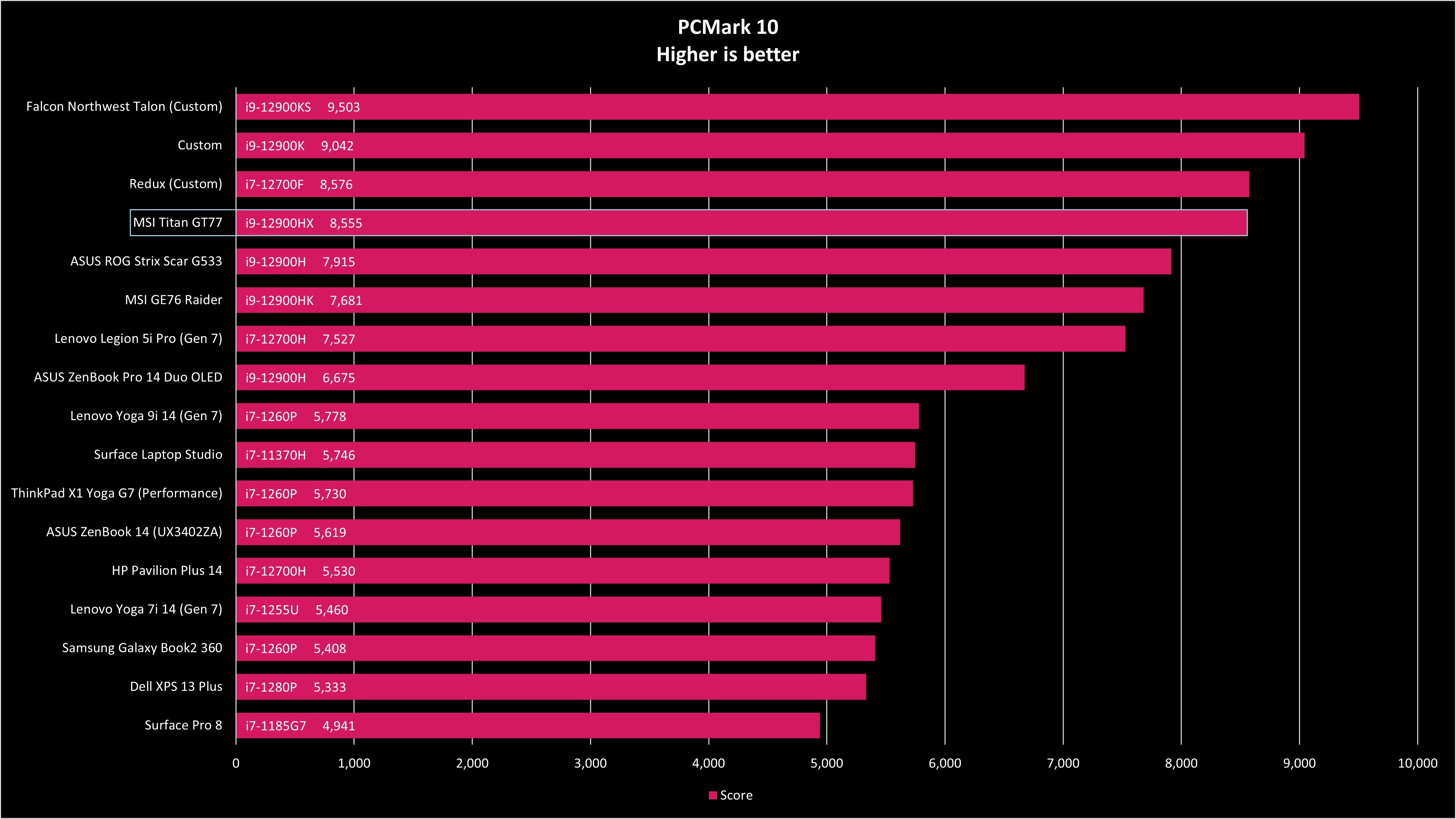
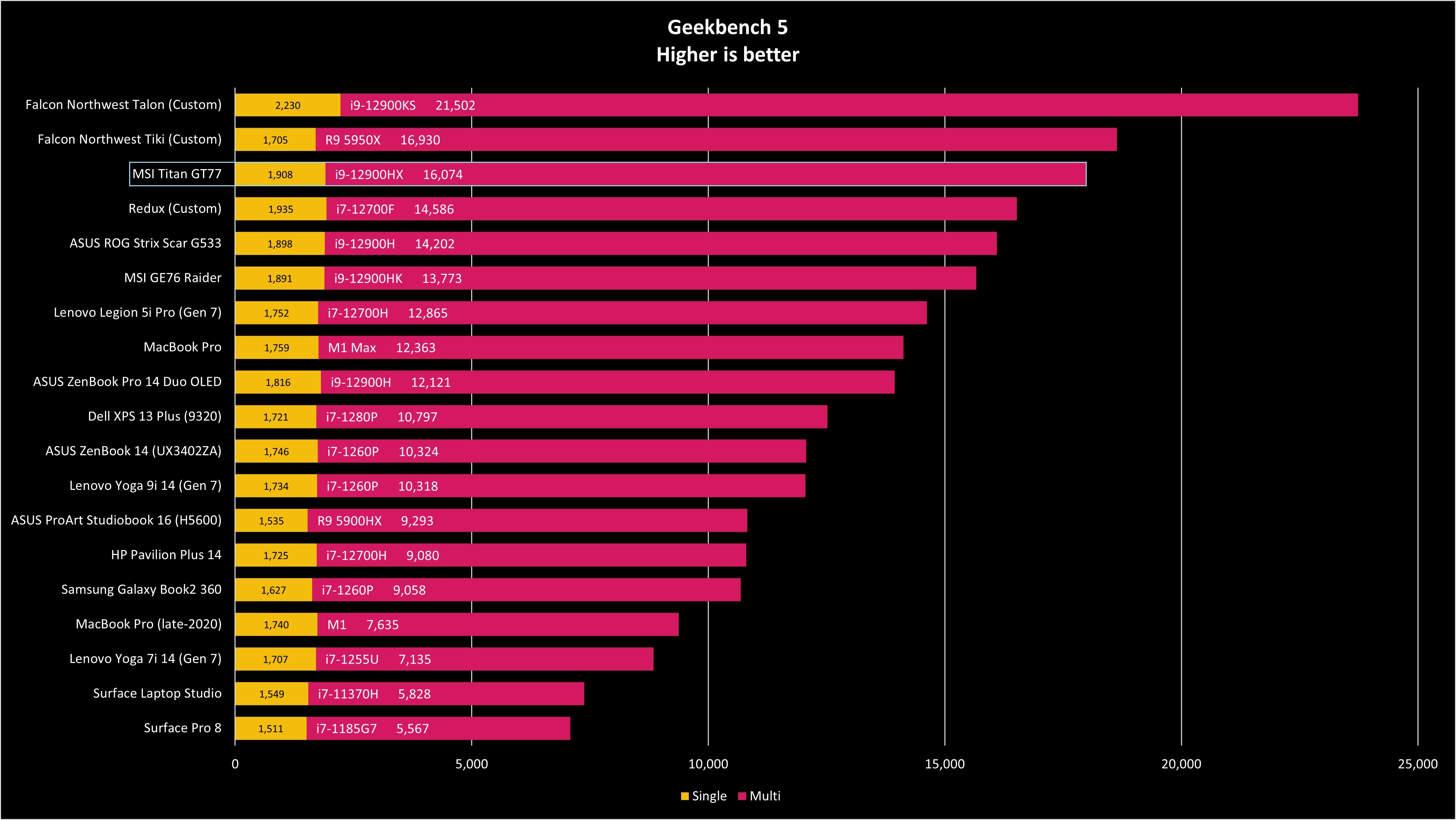
The Core i9-12900HX CPU bests everything except for high-end Intel and AMD desktop chips.
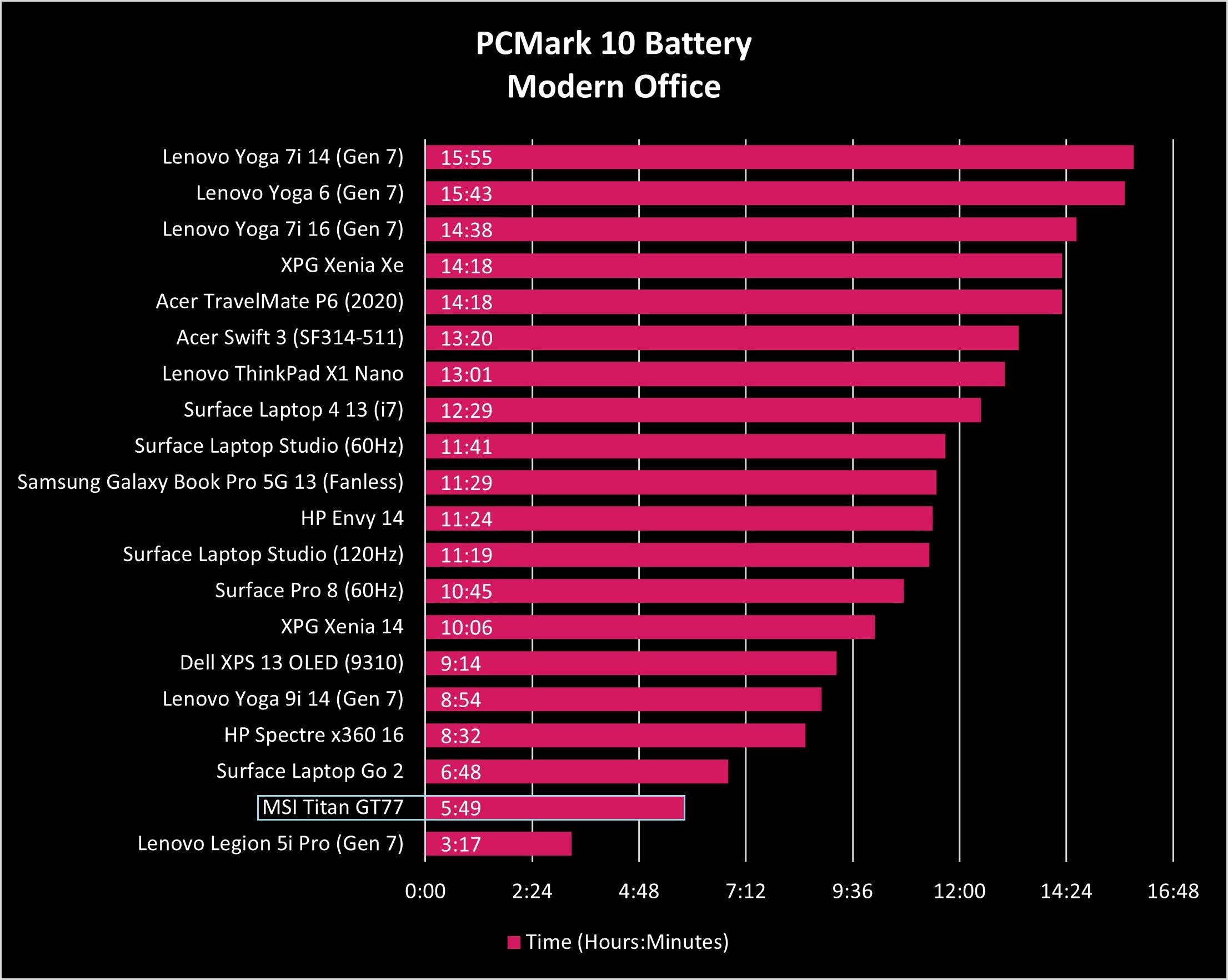
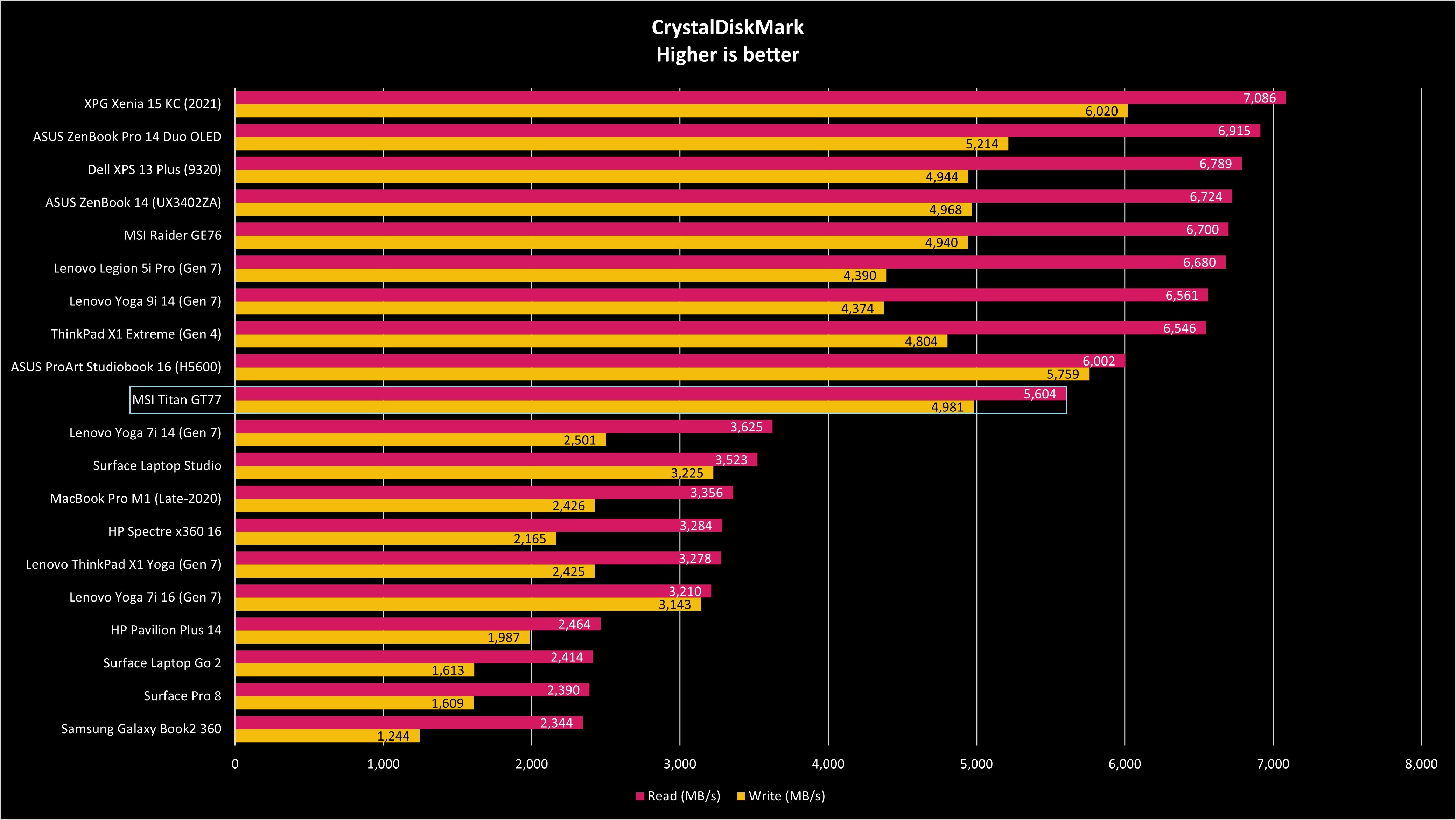
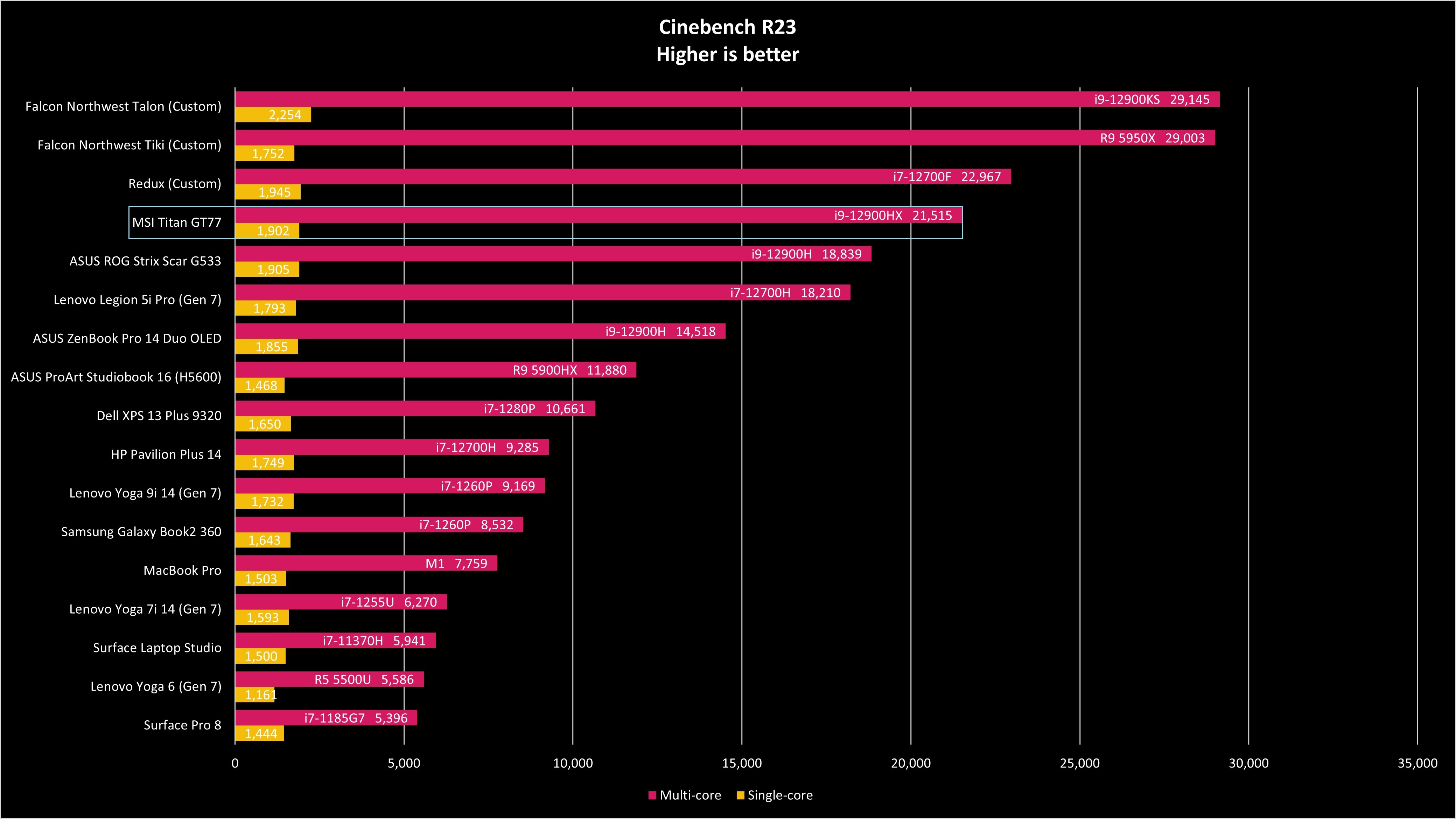
Again the Core i9-12900HX comes out ahead of everything but desktop-class CPUs.
I tested battery life using PCMark 10's Modern Office rundown with the MSI power profile set to Balanced and the Windows 11 profile set to Best Performance. Screen brightness was set at about 150 nits. Achieving almost six hours here is a great result; if you need the laptop to handle some general productivity work like spreadsheets, video conferencing, and heavy web browsing, you won't immediately be looking for an outlet.
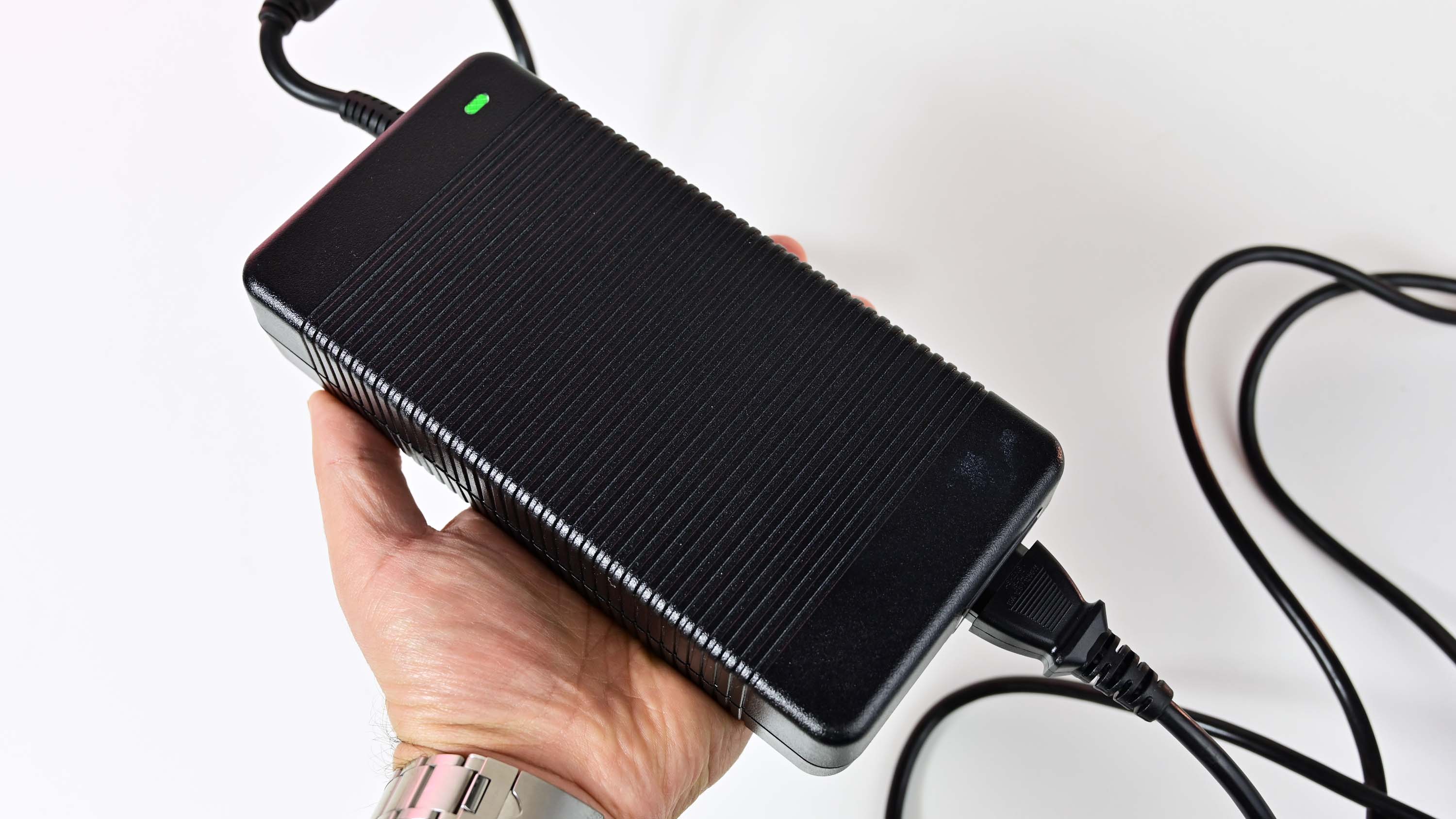
I played many hours of Rimworld on this laptop, including outdoors with screen brightness at maximum, and I was regularly getting a couple hours of life from a charge. Pushing the CPU and GPU in an intensive game will of course change that result. The highest level of performance available here is impressive, but it's only available with the AC adapter.
MSI Titan GT77: Competition
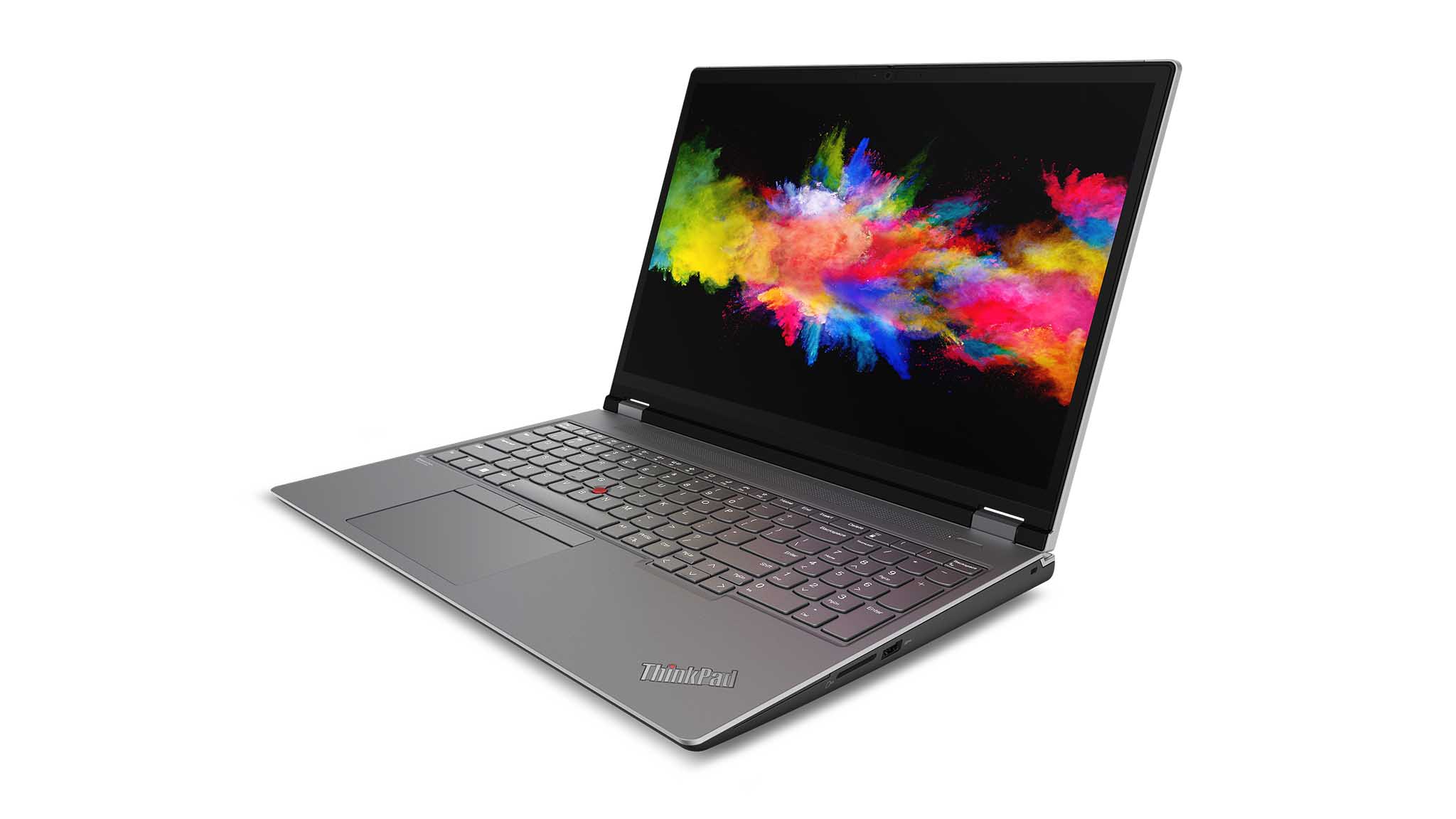
When it comes to 17.3-inch gaming laptops using Intel's 12th Gen HX-Series CPUs, your options are fairly limited.
The ASUS ROG Strix SCAR 17 SE G733 comes with up to a Core i9-12950HX (the same CPU but with vPro capabilities), NVIDIA RTX 3080 Ti Laptop GPU, 32GB of DDR5-4800 RAM, 4TB of PCIe 4.0 SSD storage, and a 17.3-inch display with QHD resolution, 100% DCI-P3 color, 240Hz refresh rate, and Dolby Vision. Models with the HX-Series chips seem to be quite rare at the moment, though you can find plenty with the standard H-Series CPUs.
The Gigabyte Aorus 17X is another 17.3-inch gaming laptop that uses the same HX-Series CPUs, though it also seems to be quite rare when searching for online retailers. Models come with up to a Core i9-12900HX CPU, NVIDIA RTX 3080 Ti Laptop GPU, two DDR5 RAM slots, two PCIe 4.0 SSD slots, and an FHD display with 360Hz refresh rate.
If you're more interested in a mobile workstation, Lenovo's ThinkPad P16 might be a better choice. It has up to an Intel Core i9-12900HX CPU, NVIDIA RTX A5500 GPU, 128GB of DDR5 RAM, and up to 8TB of M.2 PCIe 4.0 SSD storage across two slots. The 16-inch display has a 16:10 aspect ratio, up to a UHD+ resolution, 100% DCI-P3 color, OLED panel, and Dolby Vision.
Be sure to check out our collection of the very best gaming laptops for many more options.
Should you buy the MSI Titan GT77?
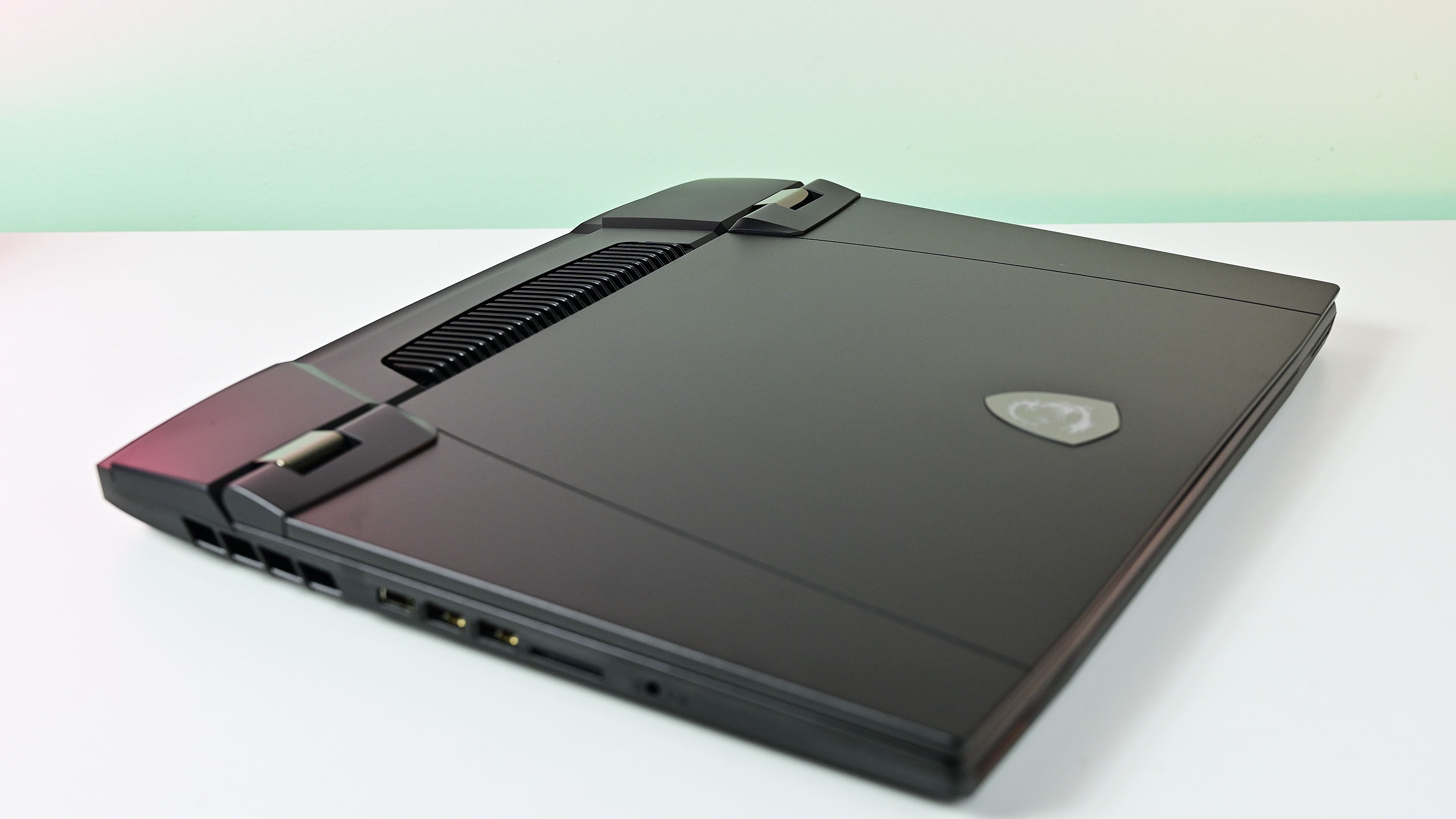
Who it's for ...
- Gamers and creators who want near-desktop performance from a laptop
- Those who want a 17-inch UHD display with 120Hz refresh rate
- Those who prefer a gaming laptop with plenty of RGB lighting
- Those with deep pockets
Who it isn't for ...
- Those looking for a casual gaming experience
- Those who want something more portable
- Those who don't have $3,000+ to spend on a laptop
While even the best gaming laptops will still fall behind a high-end custom desktop PC in terms of overall performance, the MSI Titan GT77 attempts to narrow that gap for gamers, creators, and designers who need a ton of power that can fold up and be carried around in a backpack. It absolutely blows away performance in the best Windows laptops, but it'll cost you.
The Titan GT77 raises the old want versus need question. Will most people want the GT77? Despite some of its blindspots, like the 720p webcam, display driver issue, and slow SD reader, most gamers will want this laptop for the insane performance, solid battery life, and excellent mechanical keyboard.
Do most people need the GT77? No, especially when even base models cost thousands of dollars. You could build your own custom PC for a lot less money and get similar or better performance, but that's not really the point. This is a system you can pack along with you, providing desktop-class performance in a mobile platform. And it's one of the few options out there for enthusiast gamers or creators who absolutely need this much power.
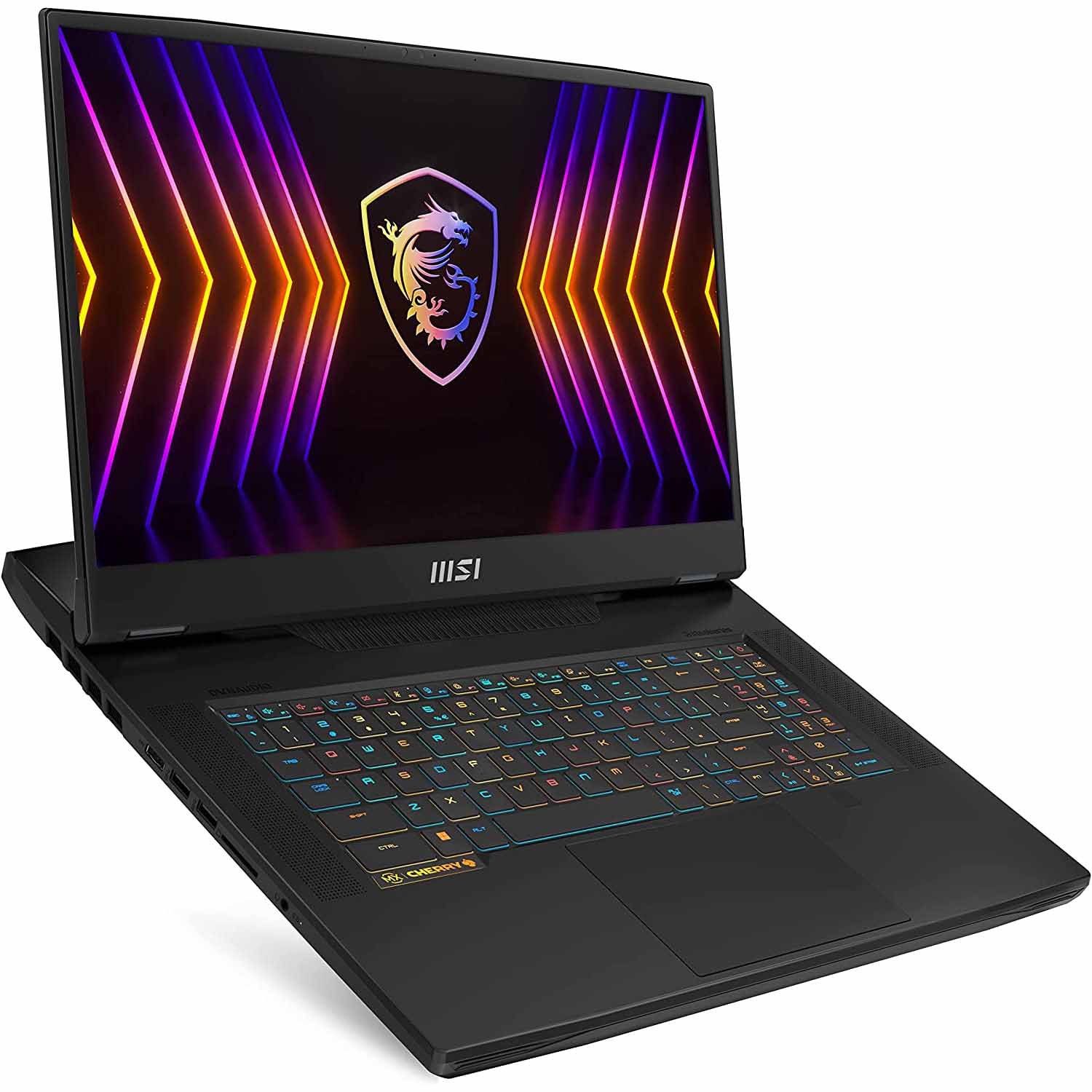
The MSI Titan GT77 is the most powerful laptop we've ever tested, but it doesn't come cheap. It should be considered if you want desktop performance in a mobile platform.

Cale Hunt brings to Windows Central more than eight years of experience writing about laptops, PCs, accessories, games, and beyond. If it runs Windows or in some way complements the hardware, there’s a good chance he knows about it, has written about it, or is already busy testing it.
